EAGAN, Minn. — The Vikings offensive line relied on continuity between starters as the team changed offensive systems under new coaches in 2022.
After opening their offseason with competition on the interior, the Vikings wound up going with one new starter: right guard Ed Ingram, who played all 1,168 of Minnesota's offensive snaps in his rookie season.
The second-round pick lined up between center Garrett Bradbury and right tackle Brian O'Neill while Christian Darrisaw (left tackle) and Ezra Cleveland (left guard) manned the other side of the pivot.
Offensive line coach Chris Kuper and assistant Justin Rascati, who both joined Minnesota in the offseason, were able to start the same combination in each of Minnesota's first 10 games before injuries rotated through the lineup.
Darrisaw was sidelined for three full games against the Patriots and Jets at home and Lions on the road because of concussions suffered at Buffalo and against Dallas. Blake Brandel filled in for Darrisaw in those games before the 2020 sixth-round selection suffered a knee injury at Detroit.
View the best photos of the Vikings offensive line during the 2022 season.







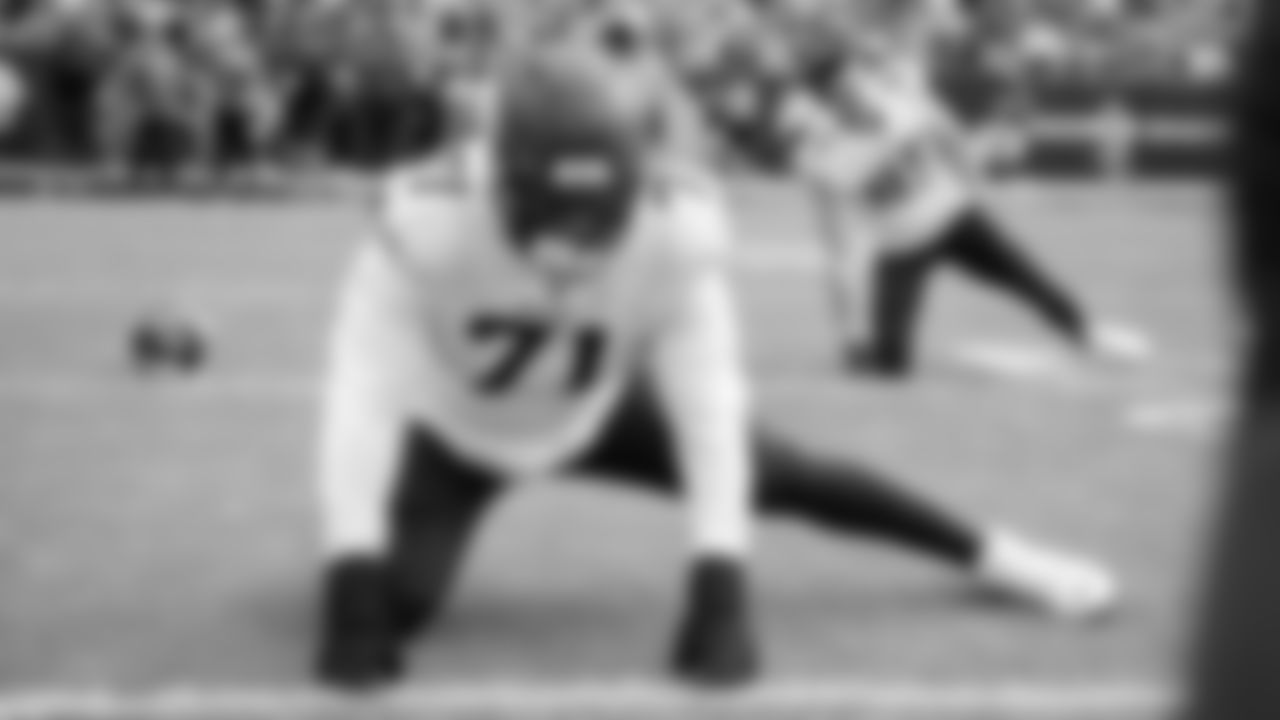


Minnesota Vikings vs. Washington Commanders November 06, 2022 FedExField, Landover, Maryland
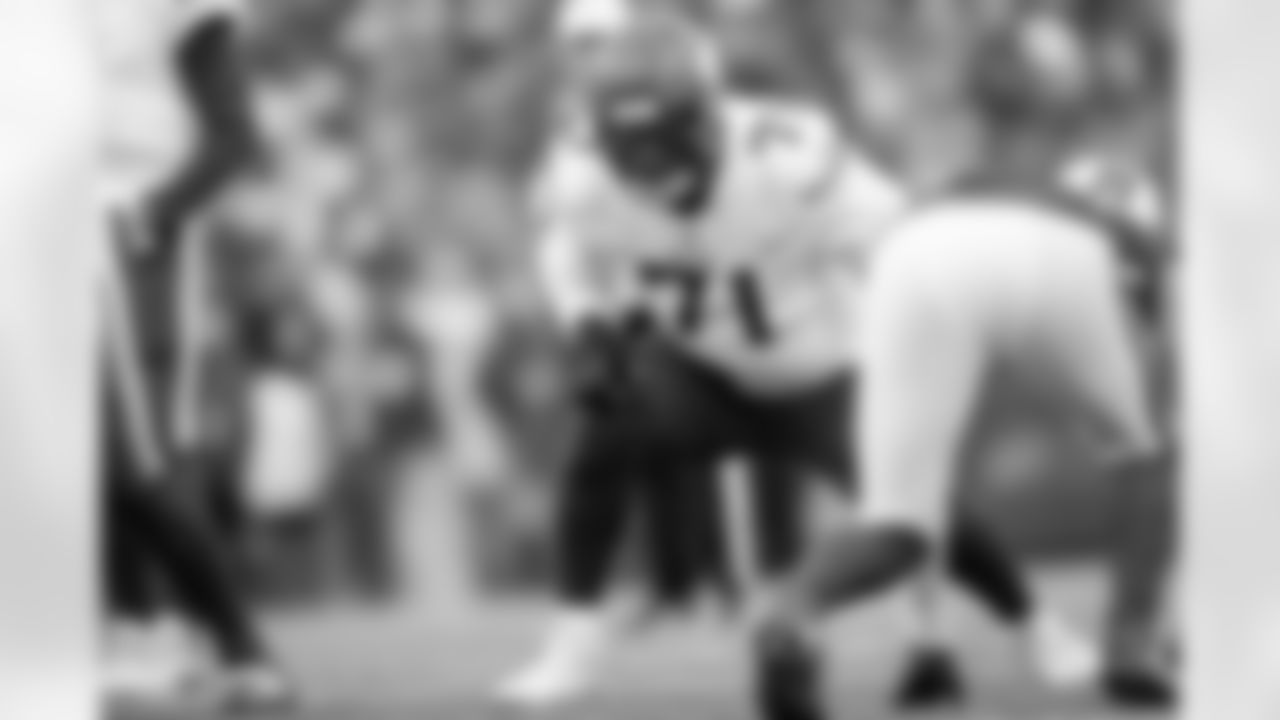

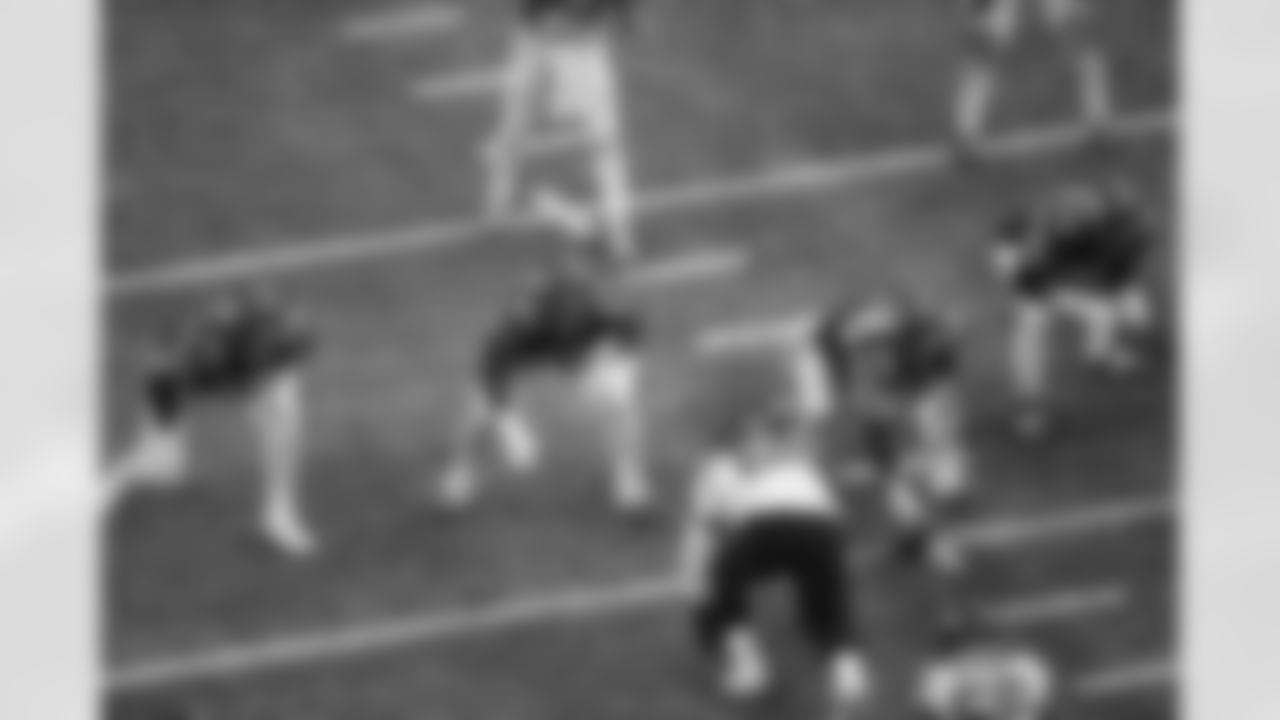








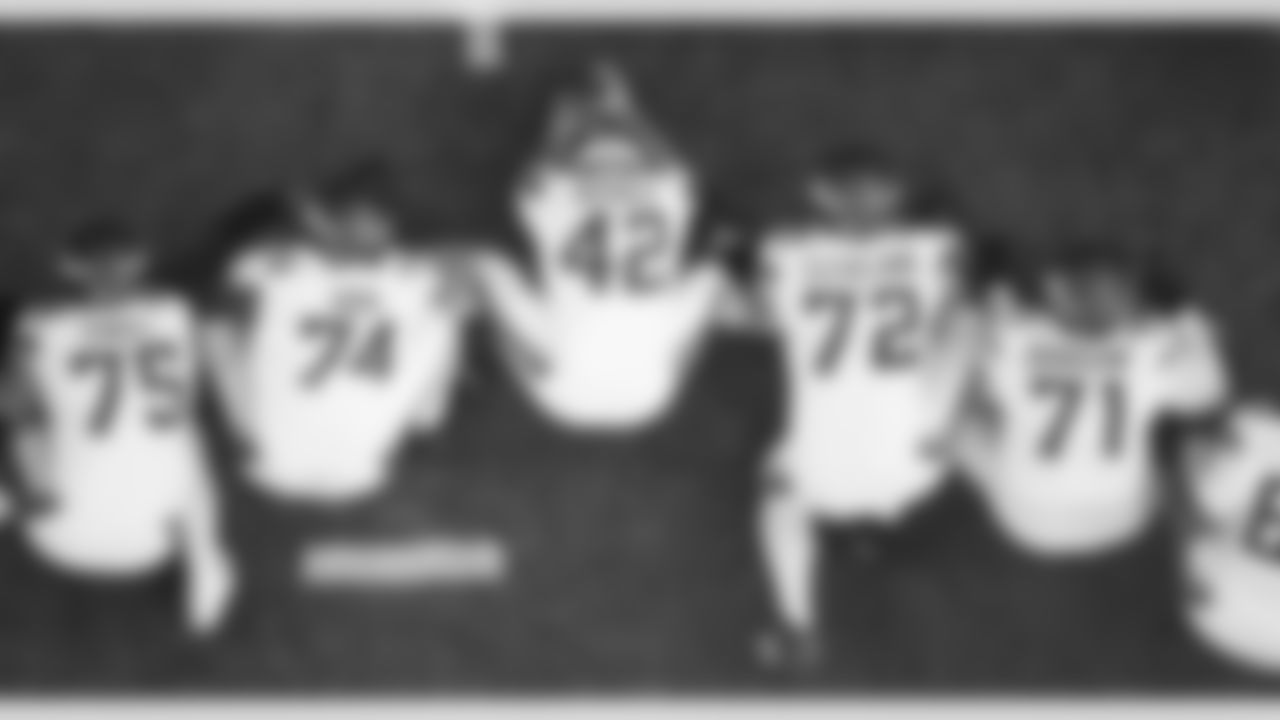



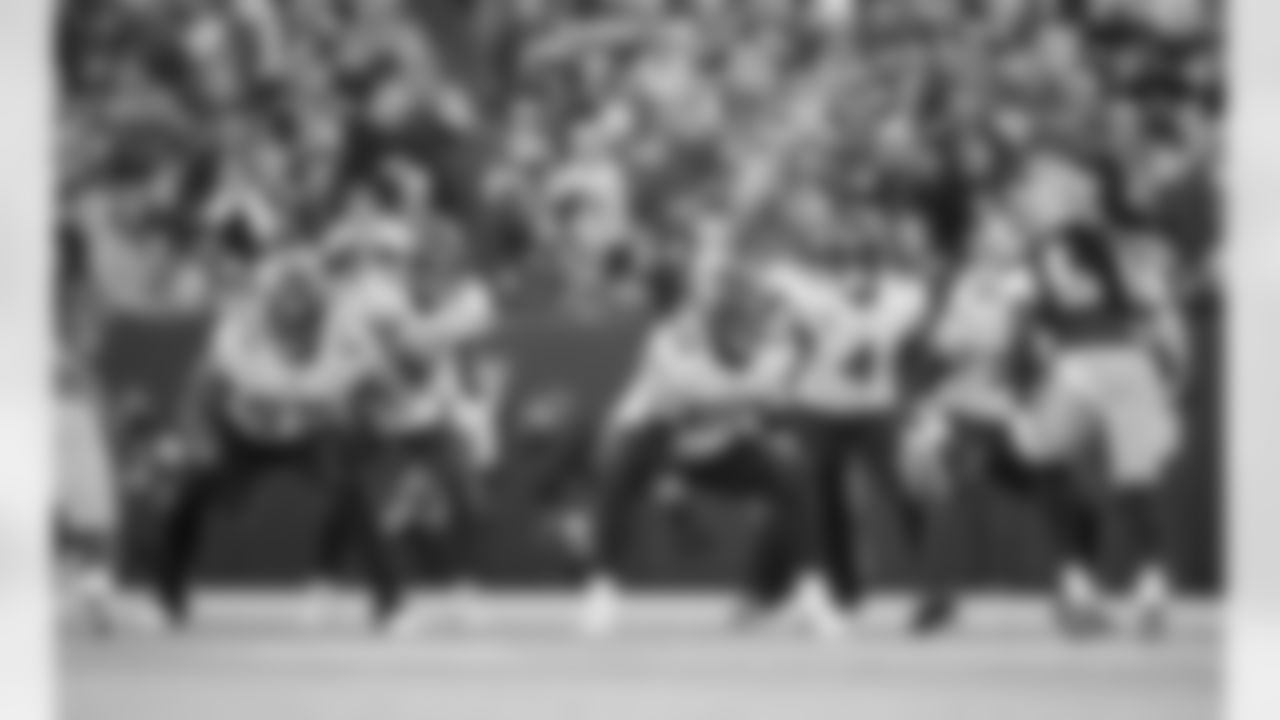
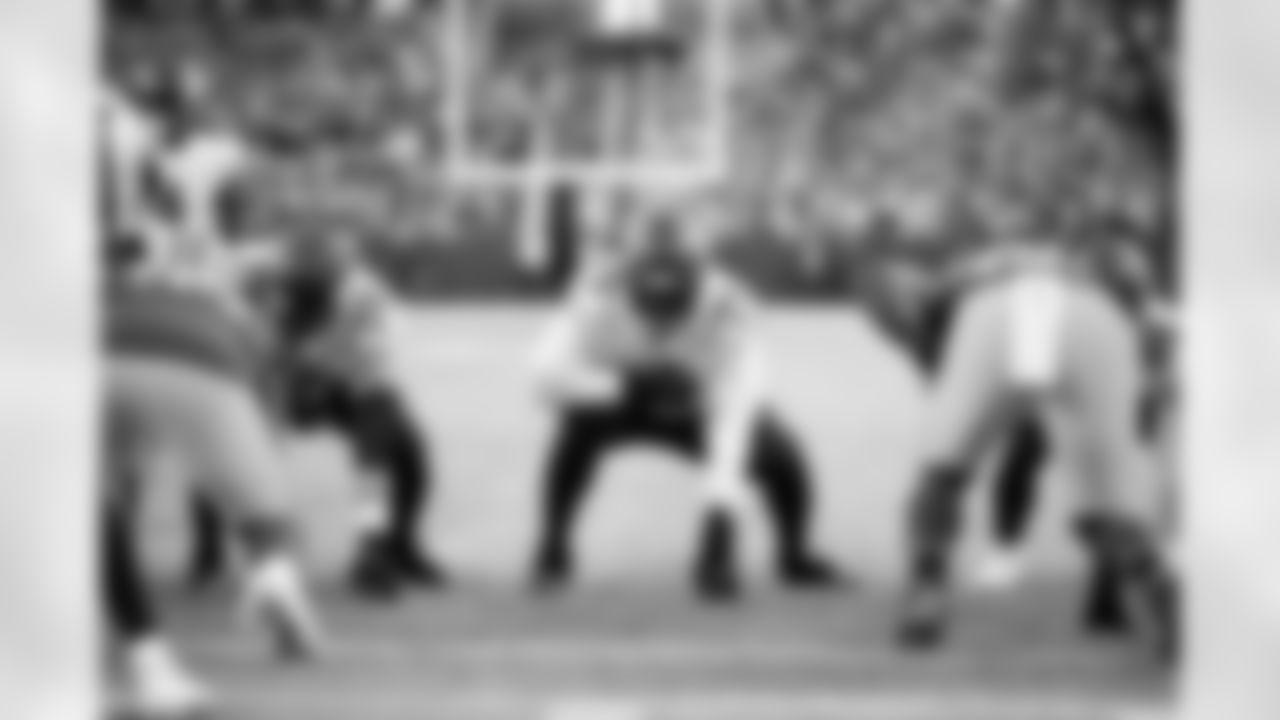












Before and after the time away, Darrisaw showed more and more evidence of what made him the 23rd overall selection of the 2021 NFL Draft.
O'Neill was again rolling along as the most-tenured Vikings offensive lineman, but he unfortunately suffered a calf injury in Week 17 at Green Bay while hustling during an interception return by the Packers. He was replaced by Olisaemeka Udoh, who then started in Week 18 and the playoffs.
All told, the Vikings used six different combinations of starting offensive linemen (including the Wild Card Round of the NFC Playoffs).
Austin Schlottmann filled in for Bradbury beginning in Week 14 before suffering a leg injury at Green Bay in Week 17. Fellow offseason signee Chris Reed relieved Schlottmann and started at Chicago in the regular-season finale.
Bradbury returned to the line up to start Minnesota's first postseason contest since January 2020.
Notable Number: 47
Sacks against the Vikings
That number ranked 25th in the NFL in 2022 and was the most allowed by Minnesota since 51 in 2014, and it tied for eighth most in franchise history (since the 1970 merger).
The caveat to that is the fact that Minnesota ranked third in the NFL in pass attempts, so the sack percentage of 6.5 checked in at 16th in the NFL.
Memorable Moment: Ezra gets on his horse
Minnesota's record-breaking, 33-point comeback against the Indianapolis Colts will be remembered for multiple reasons, but one of the greatest visuals from that remarkable charge was the 64-yard touchdown on a screen pass to Dalvin Cook that also featured Cleveland getting on his metaphorical horse and charging 40 yards down the field to help Cook reach the end zone.
"Man, I was like, 'Ezra, keep me up. I'm tired.' It's just one of those moments, man, just will yourself in the end zone," Cook said after the game. "We knew we had to get one quick, and that was the one we had to get. We executed it to a T. The O-line got out, receivers blocked. I don't know how Ezra ended up down there in front of me, but he was down there. I've gotta go watch it."
Regular-Season Statistics
Christian Darrisaw
Started 14 of 14 games played at left tackle; played 853 of team's 1,168 offensive snaps (73.0 percent)
Ezra Cleveland
Started all 17 games at left guard; played 1,134 of team's 1,168 offensive snaps (97.1 percent)
Garrett Bradbury
Started all 12 games played at center; played 810 of team's 1,168 offensive snaps (69.3 percent)
Ed Ingram
Started all 17 games at right guard; played all of team's 1,168 offensive snaps (100 percent)
Brian O'Neill
Started 16 games at right tackle; played 1,052 of team's 1,168 offensive snaps (90.1 percent)
Blake Brandel
Started three games at left tackle and appeared in nine; played 275 of team's 1,168 offensive snaps (23.5 percent)
Austin Schlottmann
Started four games at center and appeared in 16; played 235 of team's 1,168 offensive snaps (20.1 percent)
Chris Reed
Started one game at center and appeared in seven; played 124 of team's 1,168 offensive snaps (10.6 percent)
Olisaemeka Udoh
Started one game at right tackle and appeared in 17; played 131 of team's 1,168 offensive snaps (11.2 percent)
Vederian Lowe
Played in one game at left tackle and appeared in four; played 33 of team's 1,168 offensive snaps (2.8 percent)
Kyle Hinton
Played in one game at left guard and appeared in two as an elevation from the practice squad; played 34 of team's 1,168 offensive snaps (2.9 percent); Note: As a member of the practice squad, Hinton was free to sign with another team once Minnesota's season ended and inked a futures contract with Atlanta.
The highest highs
1. Impressive out of the gate
The first half of Vikings football under first-time Head Coach Kevin O'Connell couldn't have been much smoother, and the offensive line deserved a hat tip for those results.
Minnesota netted 262 yards, with 62 rushing yards on 13 carries and Kirk Cousins completing 15 of 21 passes for 208 yards and two touchdowns (passer rating of 134.6), to help the Vikings build a 17-0 halftime lead against the Packers.
The first possession of the season was a masterful, 10-play, 78-yard drive that ended with a 5-yard touchdown pass to Justin Jefferson.
The Vikings also put together drives of 89 yards (for a short field goal) and 74 yards (capped by a 36-yard score to Jefferson) in the second quarter.
Cousins was sacked just once and finished 23-of-32 passing for 277 yards as Minnesota leaned on the ground game to close out the contest. Cook rushed 20 times for 90 yards, helping Minnesota possess the football for 31:23.
2. Hot start, strong finish
The Vikings opened their Week 5 home game against the Bears (before Chicago took an inside track to the No. 1 pick) with touchdown drives of 86, 75 and 71 yards on their first three possessions of the game.
Protection allowed Cousins to complete his first 17 pass attempts, setting a Vikings record for the most completions to open a contest. Cook scored two rushing touchdowns, and receiver Jalen Reagor caught a pop pass for a 1-yard touchdown.
Despite the 21-3 margin midway through the second quarter, the Vikings found themselves trailing the Bears 22-21 with 9:26 remaining in the game.
Minnesota responded with a 17-play, 75-yard drive that Cousins ended with a 1-yard touchdown and followed with a 2-point conversion pass to Jefferson. The possession lasted 7:00 and positioned Minnesota to close out the game.
The lowest low
1. Injuries mount
This one could be the putrid game against the Cowboys by the entire team when Minnesota netted 183 yards of offense, went 1-for-11 on third downs and suffered seven sacks of Cousins, but the Week 17 game at Green Bay may have been more detrimental because of the season-ending injuries suffered by Schlottmann and O'Neill on Minnesota's fifth and 13th offensive plays.
The Vikings didn't earn a first down on any of their first four possessions and were unable to punch the ball in with three plays from the Green Bay 1-yard line after a blocked punt.
Minnesota struggled with some operations, taking two delay-of-game penalties, and eventually trailed 41-3 in the fourth quarter before scoring a couple of cosmetic touchdowns in the game's final 7:44.
2 pressing questions for 2022
1. Can the Vikings reduce their number of negative run plays next season?
Some of you may remember we asked this a year ago, too, and broke it down by run plays that gained 2 or fewer yards (211 such plays in 2021) against runs that gained 3 or more (238).
In recapping the 2022 season in which the Vikings ranked 28th in rush attempts (404), 27th in rush yards (1,661) and 26th in average (4.1), we're taking a look at run plays that gained 0 or lost yardage vs. run plays that gained at least 3.
Run plays that gained less than or equal to 0 yards: 103 (fifth most in NFL)
Net yardage on such plays: -112 (tied for ninth worst in NFL)
League averages: 89.7 runs per team that gained less than or equal to 0 yards; -99.1 yards per team on such runs
Run plays that gained at least 3 yards: 220 (27th in NFL)
Net yardage on such plays: 1,653 (26th in NFL)
League averages: 264.5 runs per team that gained at least 3 yards; 1,992.7 yards per team on such runs
Why might this matter so much?
Well, consider San Francisco tied for the third most runs that gained less than or equal to 0 yards (105 for a net loss of 105 yards), and Philadelphia had the sixth most (101 for a net loss of 82 yards).
But those teams offset their losses with runs that gained at least 3 yards. The Eagles ranked fourth with 316 runs and sixth with 2,388 yards on those carries. The 49ers tied for 12th with 279 of those runs and ranked seventh with 2,286 yards.
2. What happens on the interior?
Darrisaw and O'Neill played extremely well at the tackle spots, and although O'Neill has started his offseason rehabbing, the combination is one of the top young pairings in the NFL.
Minnesota has tried multiple approaches on the interior. The Vikings invested a first-round pick on Bradbury in 2019, but he is eligible to become a free agent.
Cleveland has played left guard for each of the past two seasons after playing right guard as a rookie in 2020.
The right guard spot has been a revolving door ever since Brandon Fusco's injury back in 2014.
The following players have played the most at right guard each season since Fusco was injured in Week 3 of 2014.
2014: Joe Berger
2015: Mike Harris (Fusco played LG)
2016: Fusco
2017: Berger
2018: Mike Remmers
2019: Josh Kline
2020: Cleveland
2021: Udoh
2022: Ingram
Will the Vikings turn to Ingram at the spot again in 2023? Will they bring back Bradbury, or will he opt for a chance of scenery?














